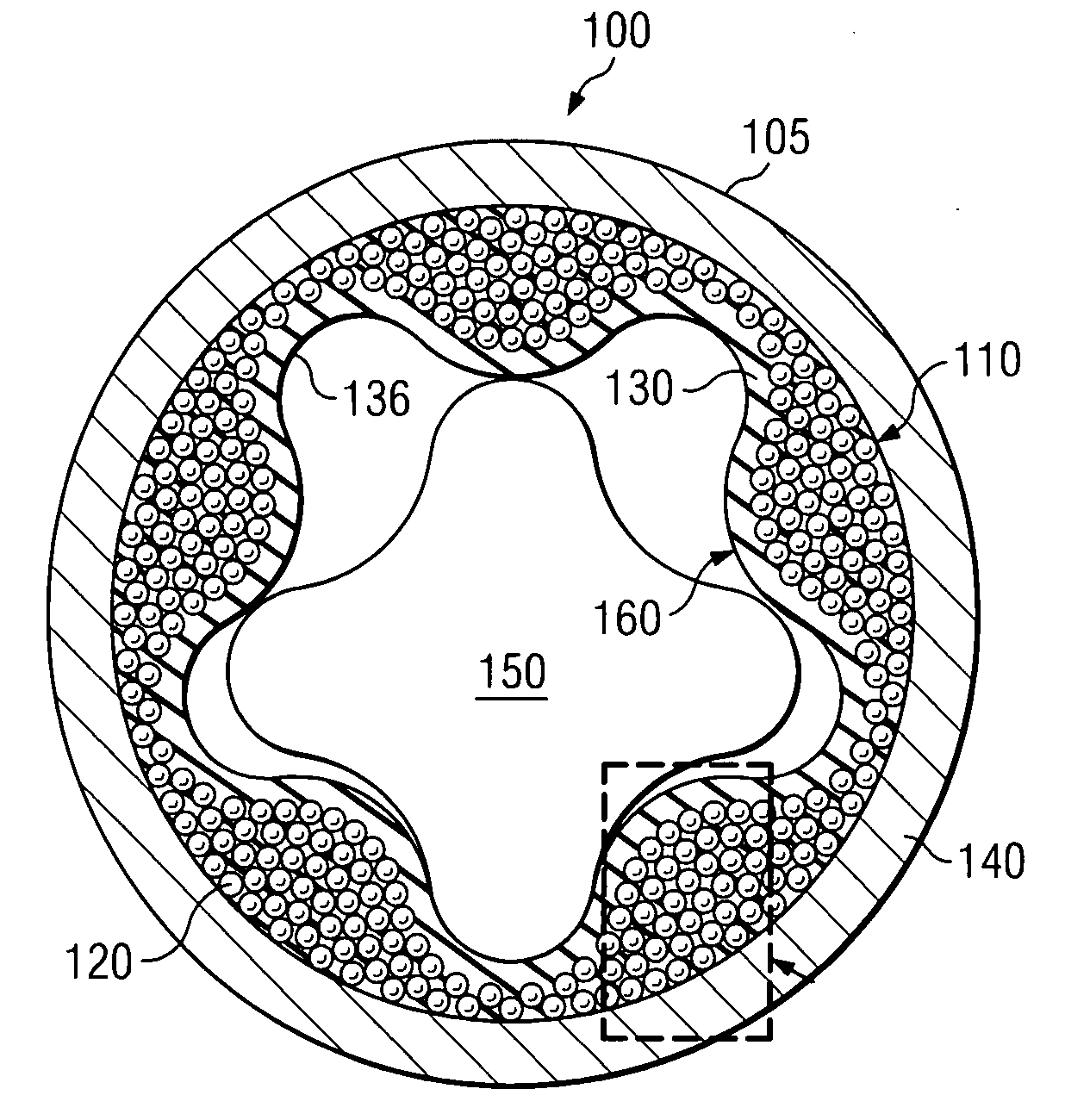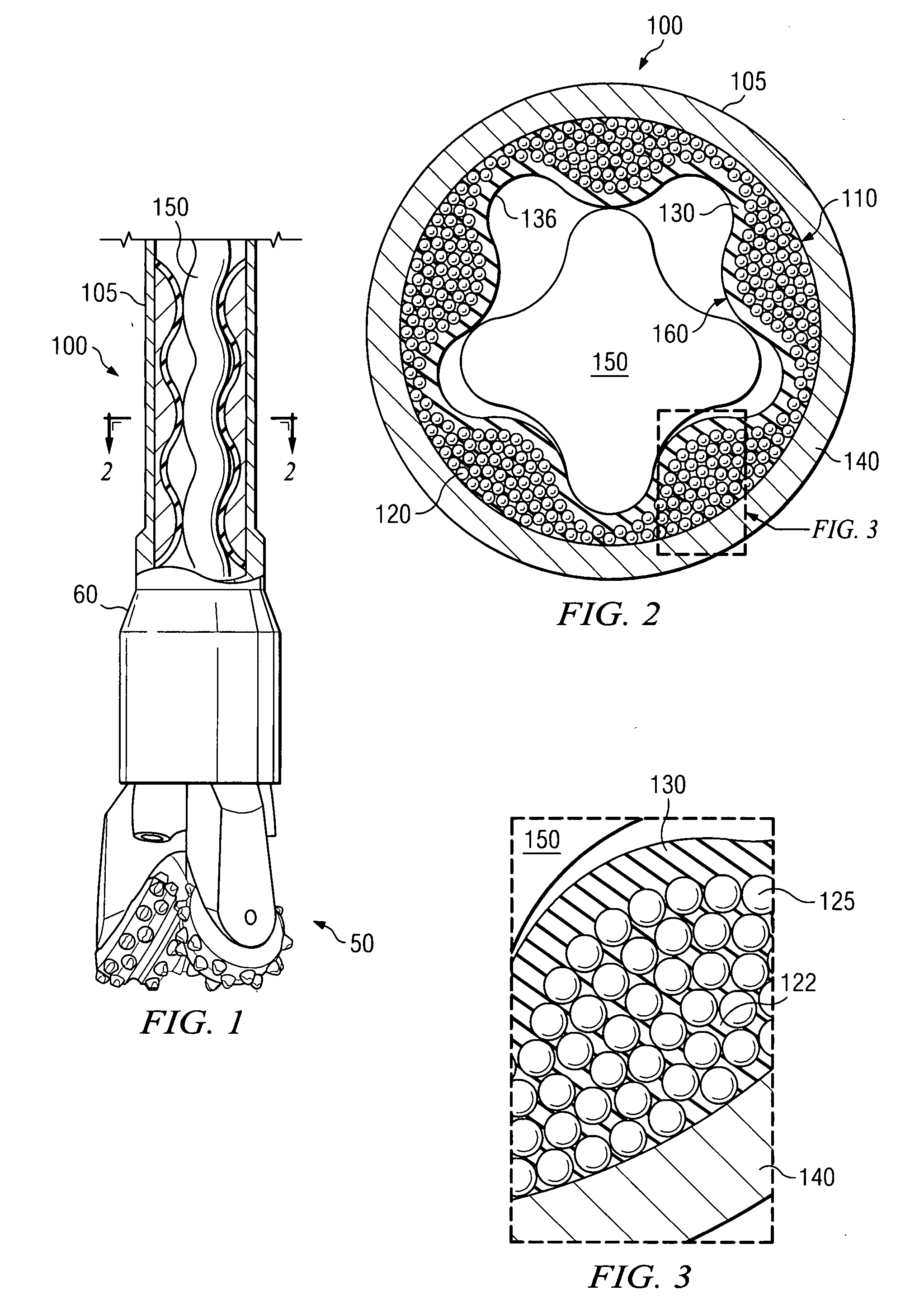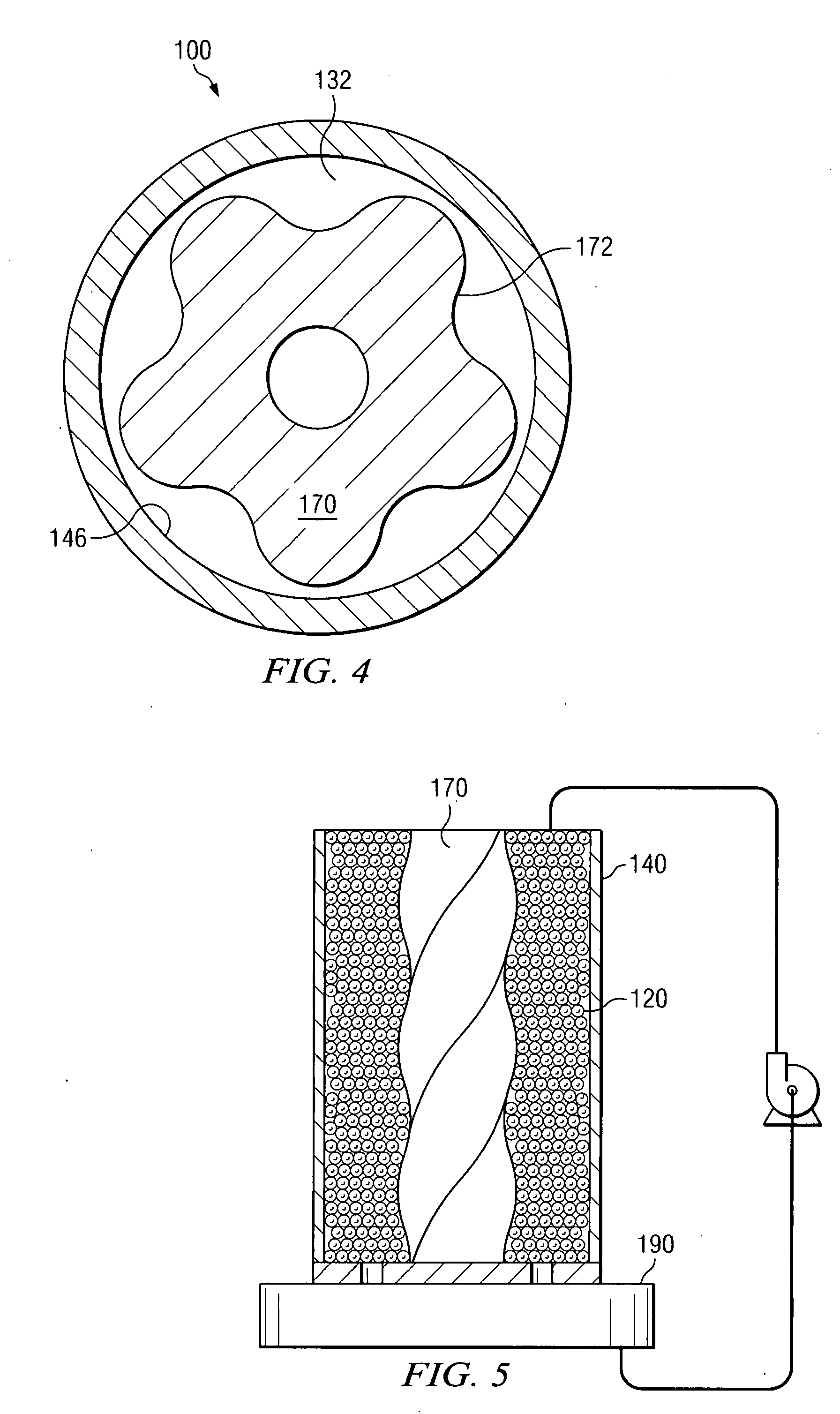Moineu stator including a skeletal reinforcement
a skeletal reinforcement and moineau technology, applied in the direction of machines/engines, rotary/oscillating piston pump components, liquid fuel engines, etc., can solve the problems of cracks, cavities, and other types of failure in the lobe, and achieve the effect of improving torque output, prolonging service life, and improving efficiency
- Summary
- Abstract
- Description
- Claims
- Application Information
AI Technical Summary
Benefits of technology
Problems solved by technology
Method used
Image
Examples
Embodiment Construction
[0021]Referring first to FIGS. 1 through 6, it will be understood that features or aspects of the embodiments illustrated may be shown from various views. Where such features or aspects are common to particular views, they are labeled using the same reference numeral. Thus, a feature or aspect labeled with a particular reference numeral on one view in FIGS. 1 through 6 may be described herein with respect to that reference numeral shown on other views.
[0022]FIG. 2 depicts a circular cross-section through a Moineau style power section in an exemplary 4 / 5 design. In such a design, the differing helical configurations on the rotor and the stator provide, in circular cross section, 4 lobes on the rotor and 5 lobes on the stator. It will be appreciated that this 4 / 5 design is depicted purely for illustrative purposes only, and that the present invention is in no way limited to any particular choice of helical configurations for the power section design.
[0023]With reference now to FIG. 1,...
PUM
| Property | Measurement | Unit |
|---|---|---|
| diameter | aaaaa | aaaaa |
| resilient | aaaaa | aaaaa |
| shape | aaaaa | aaaaa |
Abstract
Description
Claims
Application Information
 Login to View More
Login to View More - R&D
- Intellectual Property
- Life Sciences
- Materials
- Tech Scout
- Unparalleled Data Quality
- Higher Quality Content
- 60% Fewer Hallucinations
Browse by: Latest US Patents, China's latest patents, Technical Efficacy Thesaurus, Application Domain, Technology Topic, Popular Technical Reports.
© 2025 PatSnap. All rights reserved.Legal|Privacy policy|Modern Slavery Act Transparency Statement|Sitemap|About US| Contact US: help@patsnap.com



